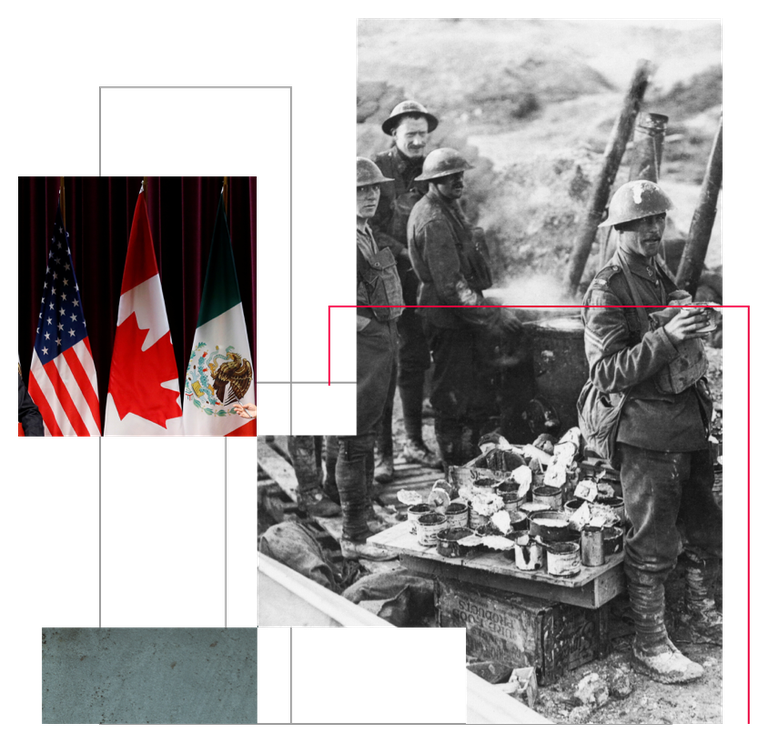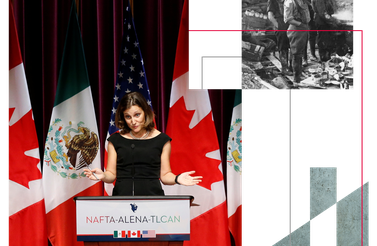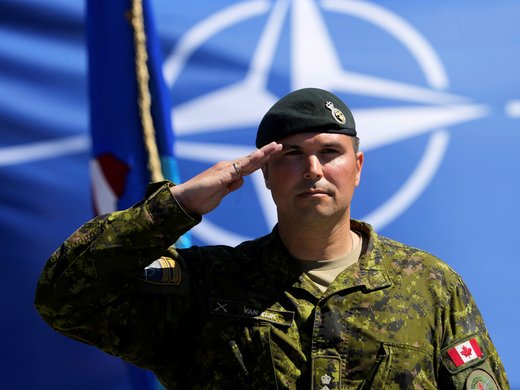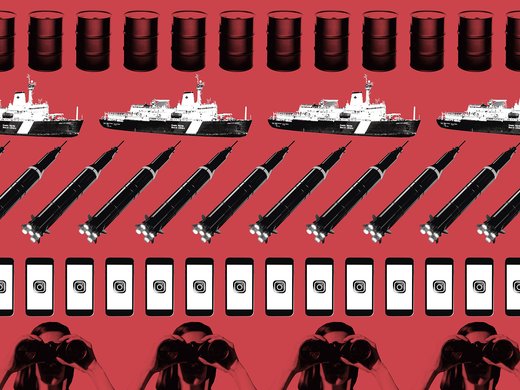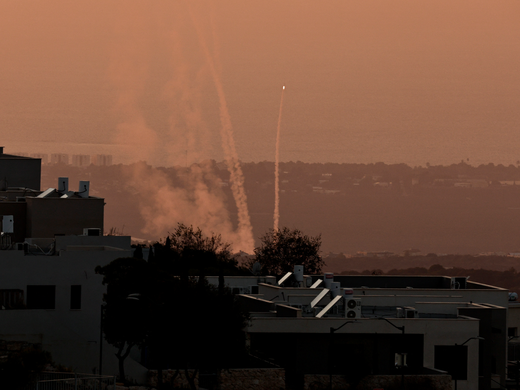Rising powers and a shifting international system. Technological change and revolutionary weapons. The search for a means to deter expansionary powers. Canadians working with — and fighting alongside — allies. A world consumed by global war.
Are these future national security challenges facing Canada? Perhaps. But this list does not describe the future. It is Canada’s past.
Consider these four useful categories to help contextualize Canada’s national security history: shifting world orders; the challenges posed by economics and trade; technological change; and the lessons of war. The goal in what follows is not to deny the importance, or even uniqueness, of today’s national security challenges but rather to suggest that they fit within a broader historical pattern. So-called “traditional” conceptions of national security — grounded in the use of military force — misrepresent the Canadian experience. Annexation and disintegration, rather than invasion or attack, has loomed as the greatest threat to national well-being.
Shifting World Orders
Canada has existed in a “rules-based international order” for only a fraction of its history. Indeed, the Canadian experience navigating new orders reveals that while change can be dangerous, it is not always or necessarily an existential threat. Consider the following three examples: the decline of the British Empire; the rise of the United States; and the onset of the Cold War.
The Eclipse of Europe
It was in 1902, 35 years after Confederation, that Joseph Chamberlain, the British colonial secretary, warned that the imperial centre was a “weary Titan,” staggering “under the too vast orb of its fate.”1 “It was time,” Chamberlain said, “[for] our children [to] assist us.” Already, Canadian soldiers had fought for the Empire in South Africa. And they would again on the killing fields of Europe during the First World War. But in 1922, when Secretary of State for the Colonies Winston Churchill gracelessly sought to draw Canada and other dominions into the Chanak crisis with Turkey — when “The British Lion Call[ed] [Its] Cubs to Face the Beast of Asia” — the cubs stayed home.2
The British Empire was changing, as was the world order around it. Britain’s global obligations had become overwhelming. The evolving world order energized debate and thinking about Canada’s place in it: its role in international diplomacy and international organizations; the relationship with both London and Washington, DC, and the Commonwealth of Nations; and the connections between international and domestic economics. What we now, with the benefit of hindsight, call the “interwar period” was a period of intellectual ferment and innovation as Canadians thought about how to chart an independent foreign policy in the world (Hillmer 2016). Canada was born into an international system in flux. Historical perspective suggests that adapting to a changing international context is not, in and of itself, so much evidence of an existential national crisis as it is an enduring obligation of Canadian statehood.
The evolving world order energized debate and thinking about Canada’s place in it.
The Rise of a Hyperpower
For Canada, the greatest engine of change in the contemporary international system has been the rise of American power. US Founding Father Benjamin Franklin saw advantage in acquiring British Canada. William H. Seward, Abraham Lincoln’s secretary of state, was sure the people of Canada “would have built ‘excellent states’ that would surely be admitted to the union” (quoted in Immerman 2010, 123). Senator Henry Cabot Lodge dreamed of adding Canada to the Republic in 1895. As late as 1912, Richard Immerman writes, Theodore Roosevelt had “never entirely gave up his interest in annexing Canada” (ibid., 156). Troops were not required in these American imperial visions: Canada would, like a ripe apple, fall into the Republic’s lap.
And yet, the United States did not annex Canada. Ottawa has maintained its political independence from Washington, as well as doing something more miraculous. Over the twentieth century, it managed to exchange great power patrons. Having relied on the United Kingdom to protect it from the United States, Canada came to rely on the United States itself for its defence. The deft and clever minuet by which Ottawa both maintained Canada’s political independence and shifted the prime guarantor of its security was achieved with such care that it is difficult to pin down just when it happened.
In sum, Canadians have been remarkably agile in managing seismic shifts in the international system.
The Cold War
It is often suggested that the Cold War was an easier time for Canadian national security practitioners. The Soviet Union might have posed a credible threat, and nuclear war was a real possibility, but Canada’s loyalties and allegiances were clear, and steady. There was a logic, the thinking goes, to keeping troops stationed in Europe from the early 1950s into the early 1990s. And yet, recently declassified records reveal that as part of a National Security Study begun in 1954, the chairman of the chiefs of staff and the leadership from the Department of National Defence believed the Canadian forward deployment in Europe to be wasteful and unnecessary. They favoured withdrawal. It was the officials from the Department of External Affairs who argued for continued deployment, and they did so because the troops had been deployed as a symbol and their withdrawal would have been equally symbolic. Robert Bryce, the clerk of the Privy Council, described Canada’s national security choices in 1955 aptly, “We are a prisoner of the past” (Department of External Affairs 1955a). The prisoners’ sentence would not expire until 1992. We should be wary of hasty comparisons with — let alone nostalgia for — Canada’s Cold War.
The Economic Lever
For much of Canada’s history, Canadian political leaders have feared that economic forces might pull their country in different directions, not least south. The oft-repeated accusation that Canadian proponents of free trade were selling out to the United States was an effective political cudgel during the elections of 1891 and 1911. Indeed, the notion that increased trade with the United States would lead to the demise of Canada as a political entity would seem hysterical were it not for the fact that many American politicians did indeed see improved US-Canadian economic relations as a step toward annexation (Bothwell 2015).
The debates between Prime Minister Brian Mulroney and Opposition leader John Turner in the 1980s echoed these earlier arguments. Turner maintained that free trade with the United States would lead to the surrender of Canadian economic and political independence (Bothwell 2007). A powerful 1988 Liberal Party of Canada election ad even portrayed an imperious American negotiator with a map of North America, scrubbing away the US-Canadian border with a pencil eraser (Liberal Party of Canada 1988).
North American free trade did come to be, first between Canada and the United States and later with Mexico as well. Intriguingly, there is evidence to suggest that free trade, and the greater integration of national economies that followed, secured Canada’s independence in national security decision making. In 2003, when the Government of Canada chose not to participate in the star-crossed invasion of Iraq, Ottawa assumed, rightly, that US-Canadian economic integration meant there could be no American retaliation without harm to US financial interests (Thakur and Cunningham 2015).
More recent experience is less hopeful. US President Donald Trump was more willing than his predecessors to bundle economic and trade concessions with foreign policy demands. Better-focused presidents, willing to use the power inherent in their control of access to the United States market, may be able to leverage that economic might to influence Canadian foreign, and even domestic, policy, and pose a clear threat to Canada’s national security. Increasing Canadian reliance on trade with the People’s Republic of China is also concerning as the concept of “trade as a weapon” regains global favour (Saint-Jacques, quoted in Blanchfield 2021).
Technological Change
Technological shifts have also had significant, and unforeseen, effects on the development and conception of Canadian national security. Consider here railroads and nuclear-equipped missiles.
Railroads
The development of rail travel provided an important “dual use” technology for Canada. The troops sent west to put down Louis Riel’s armed rebellion in 1885 travelled via the Canadian Pacific Railway (Bothwell 2007). But the broader national security implications of railways went much further. The railroad was essential in enticing new provinces to join the Canadian confederation. It made tangible the intangible idea of Canada. It forged links that ran east-west, rather than north-south, helping to build a Canadian economy and, as one of Prime Minister John A. Macdonald’s biographers put it, “to achieve a separate political existence [from the United States] on the North American continent” (Creighton 1955, 301). Technology, then, helped unite Canada in a political and economic sense, thereby strengthening Canadian national security against American encroachment. Today’s focus on disruptive technologies is important, but let us not forget how technology can also be used to bind and strengthen a country.
Nuclear Weapons
No technology has had greater effects on Canadian thinking about national security than the advent of nuclear weapons, and, in particular, the marriage of warheads and missiles. For Canada, the greatest impact was at home: First there was a need to closely combine US and Canadian air defence efforts. Second was the political pressure to obfuscate the extent to which Canada participated in the maintenance of nuclear deterrence. The two are closely connected.
In the 1980s, Canadian diplomats prepared briefing notes on the national nuclear posture: “It is well known,” they wrote, that Canada “is not now and never has been [a] nuclear power” (quoted in Colbourn and Sayle 2020, 227). They were splitting hairs. Canada was a primary transit point for Strategic Air Command (SAC) bombers in the early Cold War, serving as a basing, storage and refuelling area for SAC and its weapons. Canada hosted US nuclear air defence and anti-submarine nuclear weapons and acquired warheads from the United States for Canadian interceptors. In Europe, Canadian Forces were trained and equipped with weapons that would launch American nuclear warheads. Canadian pilots stood by, ready to fly nuclear strike missions against Warsaw Pact targets of opportunity. Canada did and does contribute to the maintenance of the US nuclear deterrent, primarily through joint continental air defence. As officials at the Department of External Affairs wrote in 1954, the main aim of Canadian policy lay in preserving peace. Paradoxically, the “chief means of doing this [was] by building and maintaining deterrent strength,” especially the “capacity to retaliate instantly against aggression with nuclear weapons” (Department of External Affairs 1955b). So closely integrated was Canada in the American deterrent that officials worried in the 1950s that they had pre-committed Ottawa in case of a potential war with China (Department of External Affairs 1955c).
The Canadian public had (and still has) a limited grasp of the role of nuclear weapons in Canadian policy. That disconnect between policy and public has always been dangerous: if Canadians do not understand that their government has a specific technological capability, or why Ottawa engages in, say, cyber operations, there is a risk of confusion and public opposition to using tools that the government might deem essential.
The Lessons of War
Canadian leaders learned a fundamental lesson from the First and Second World War: general war poses an existential threat to Canada. In neither case, however, was the threat invasion or annexation. Rather, it was something equally disastrous: political division and the seeds of dissolution.
Prime Minister Robert Borden’s 1917 electoral success (and subsequent introduction of conscription) was achieved with a campaign that, as historian Robert Bothwell (2007) notes, “came very close to preaching racial hatred.” Anti-conscription riots, put down with armed force, were short-lived, but the memory endured in Quebec for decades. The conscription crisis of the Second World War was different in nature and effect; Prime Minister Mackenzie King grasped both horns of the dilemma and survived politically. So too did Canada.
The power of war to break Canada was so plain and obvious that it constituted the very foundation of postwar Canadian foreign policy. “The first general principle upon which I think we are agreed,” declared Secretary of State for External Affairs Louis St. Laurent, in his 1947 Gray Lecture, “is that our external policies shall not destroy our unity” (St. Laurent 1947).
During both world wars, the two most powerful political blocs in Canada were divided in the extent of their loyalty to the British Empire. In a future conflict, there is less reason to think a threat to national unity will lie along a French-English axis. Canadians today have connections to a far more diverse number of places in the world, and some consider those links to be an integral part of their political identity. Consider just one example: There has been significant discussion in the United States of late about how best to prepare for war with China in the event that it invades Taiwan. Concurrently, during the 2021 federal election, the leader of the Opposition, Erin O’Toole, came under pressure for taking too tough a stand on China (Blackwell 2021). Another candidate in the election complained of a targeted disinformation campaign in response to his and his party’s stance on China. In retrospect, he suggested the Conservative Party needed to distinguish its policy toward the People’s Republic of China from its attitude toward the people of China (ibid.). But such a distinction makes little difference in open conflict. What would be the nature of political debate in Canada if forced by events to take a decision regarding a war for Taiwan?
The threat of a serious global crisis or war will raise fundamental concerns that go straight to the heart of what it means to be secure: First, what fissures will such a crisis open in Canada, and how will the government manage these divisions? Second, will the Government of Canada be willing to take a decision in a crisis, or will fear of domestic political disharmony or opposition from organized blocs paralyze Ottawa into inaction?
Conclusion
It is unreasonably difficult to study Canadian national security history (Marsden 2021). That is both a shame, and a threat to Canada’s future. A better understanding of Canada’s history is a source of national security. History can provide lessons from the past, but its broader value lies in helping Canadians understand the difficult decisions leaders make to protect the country, and the costs that come with those decisions.
Canada is not invulnerable today. But nor did its ocean “moats” make it invulnerable in the past. World orders have changed around Canada since Confederation, and Canadians have adapted to these changes. Historically, the greatest security threats to Canada have been economic and political currents that have threatened to pull Canadians in different directions. Canadian leaders carefully managed the politics of trade and economic relations to ensure market forces did not pull Canada apart. They used technology to promote national unity. They also harnessed technology for defence, although this effort required leaders to downplay Canada’s reliance on weapons with tremendous destructive potential. And while Canadian leaders felt compelled to join the two great conflagrations of the twentieth century, fighting in these wars posed serious and long-lasting threats to domestic harmony. Indeed, the most acute threat to Canada posed by the world wars lay within the country itself. If there is a pattern to Canada’s national security history, it is that, for more than 150 years, the viability and integrity of the state have been preserved first and foremost by ensuring that Canadians remain united.
